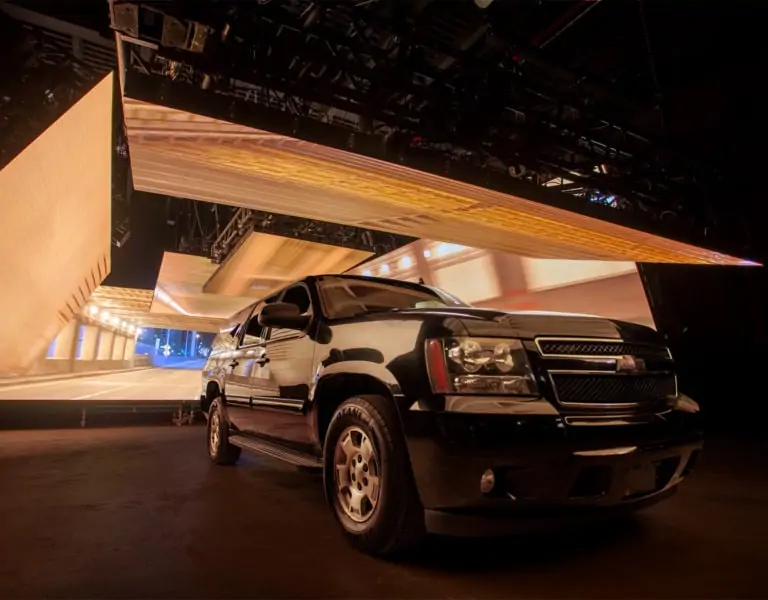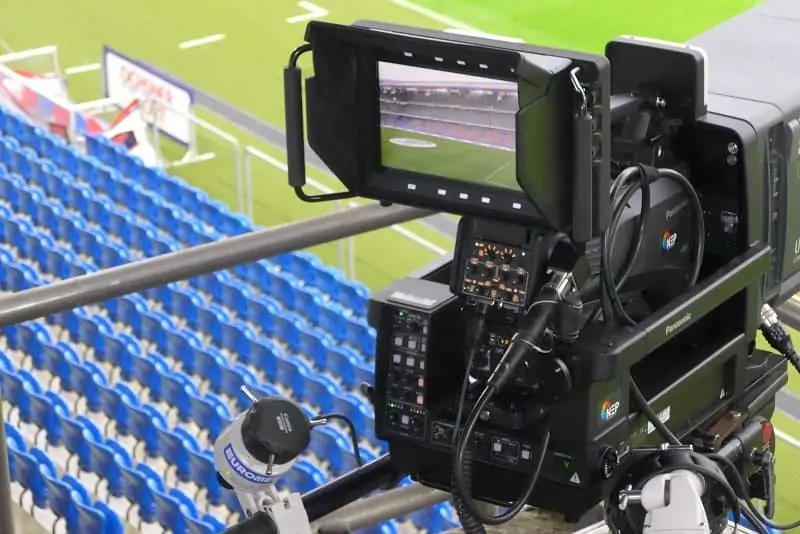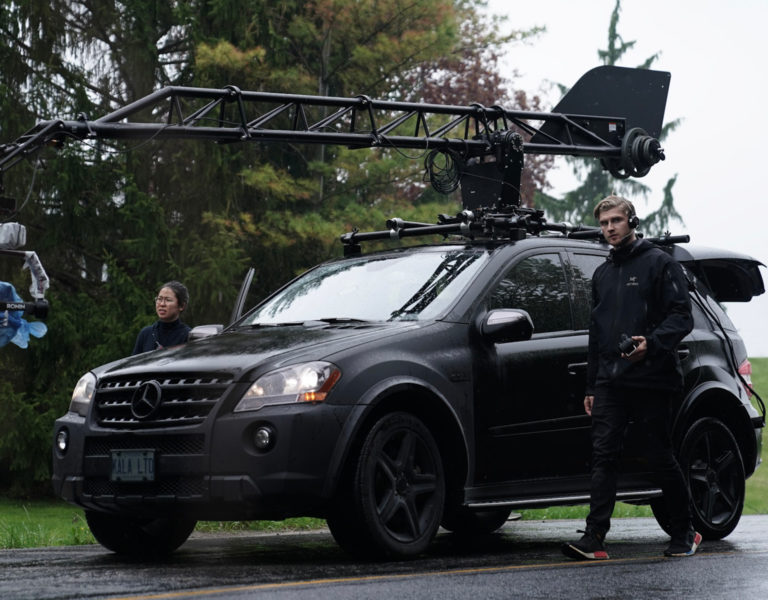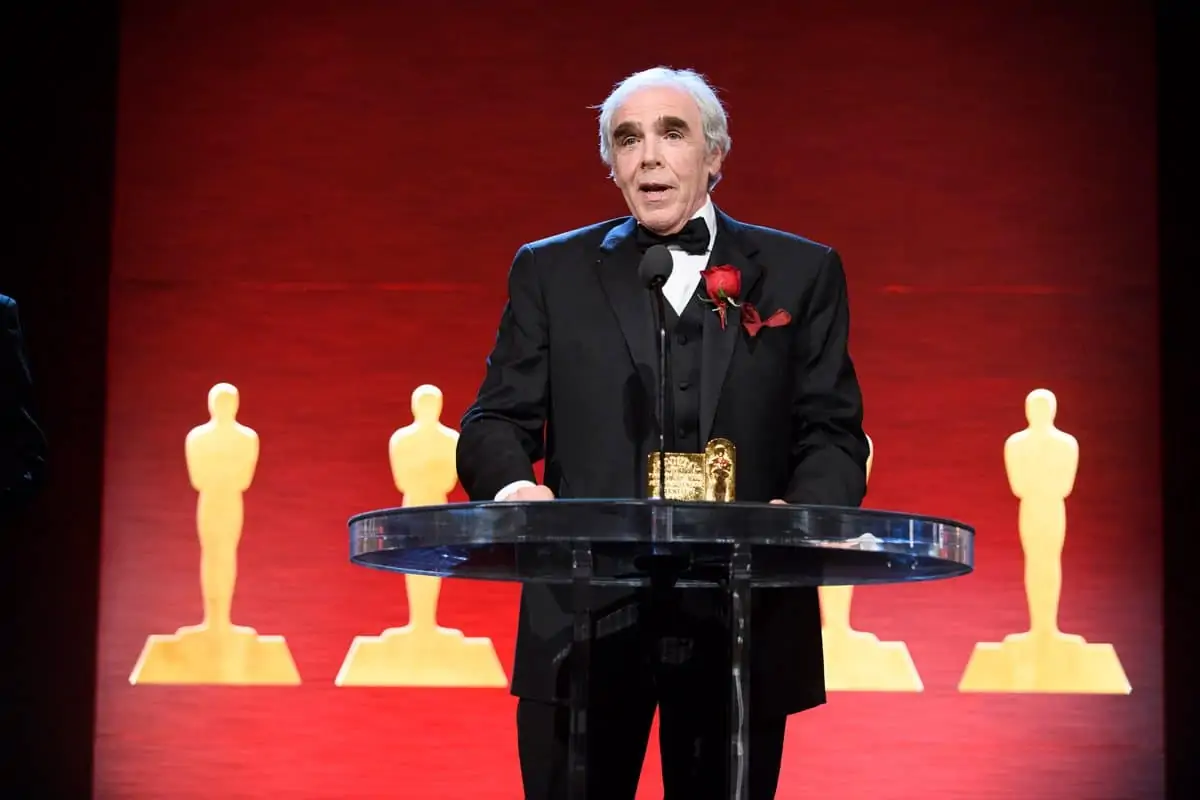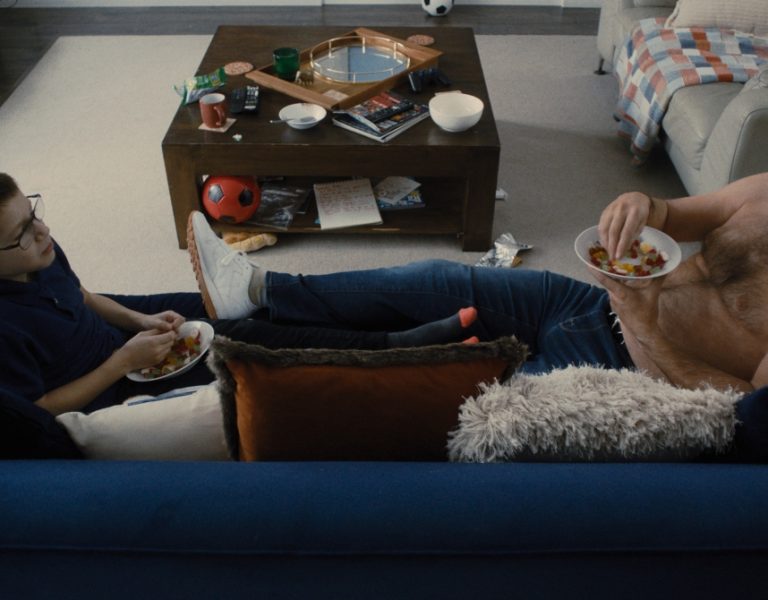CAMERAS AT SPEED
From superhero stunts in a circling single take to bloody revenge on a wildly spinning waltzer, the challenges of filming in moving vehicles are no barrier to a DP’s creativity.
When Stephen Murphy BSC started the upcoming BBC police drama Blue Lights, he was faced with scripts containing many long dialogue scenes set in police cars travelling at high speed. “What might be a normal five-page walk-and-talk scene in another show was going to take place in a car driving around the city, or they’d be driving at normal speed and then halfway through they’d have to do a U-turn, accelerate, take off. That kind of stuff.”
Rear projection and virtual production were considered, but when Murphy proposed using a pod-car system director Gilles Bannier was immediately enthusiastic. “He hated the idea of being stuck on a stage for weeks and weeks and weeks,” says Murphy. “He thought that would kill the performance… The pod-car, it’s a more tangible thing… You’re feeling the way the car bounces around, and the actors respond to that.” He adds that “it can turn or reverse in a way – because it’s a single car – that a traditional low-loader just can’t.”
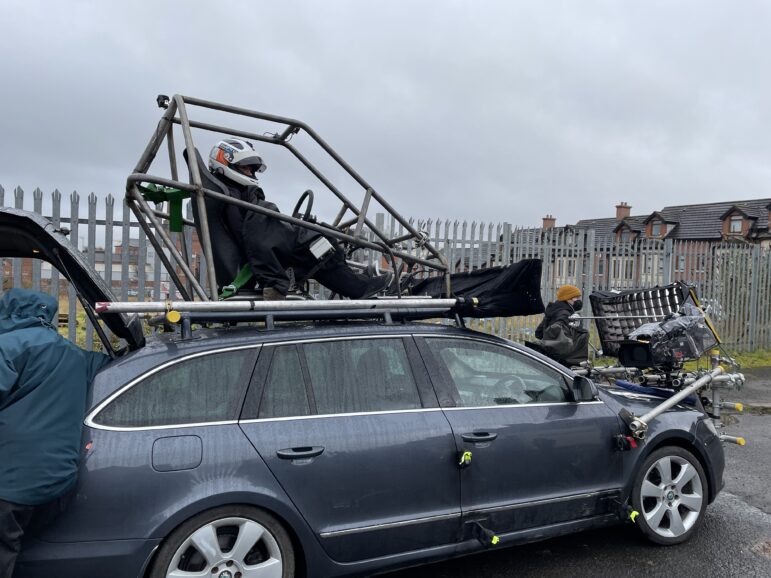
The system involved precision driver Gary Greenberg building a pod for himself onto the roof of a police car, allowing the cameras – a Panavision DXL2 and DXL Mini with Primo Primes – to look in any direction without seeing him. In collaboration with key grip Ian McGurrell, he added mounting points to the chassis “so we could easily move our camera rig from one side of the car to the other in a few minutes,” explains Murphy.
The power of the pod-car
The DP is now working on the series Mr. & Mrs. Smith and utilising another form of pod-car called the Biscuit Jr. Developed by Allan Padelford Camera Cars in California, this Academy Award-winning rig permits filmmakers to choose where to mount the driver’s pod, including on a truss tower, and that is exactly what the makers of Marvel’s Hawkeye series did when they used it on a stand-out car chase in the third episode.
The first minute of this chase is an unbroken shot from the back seat which executes three complete rotations to take in lead actors Jeremy Renner and Hailee Steinfeld as well as the action behind and around their car, before following Steinfeld as she leans out of a window and aims her bow at their pursuers.
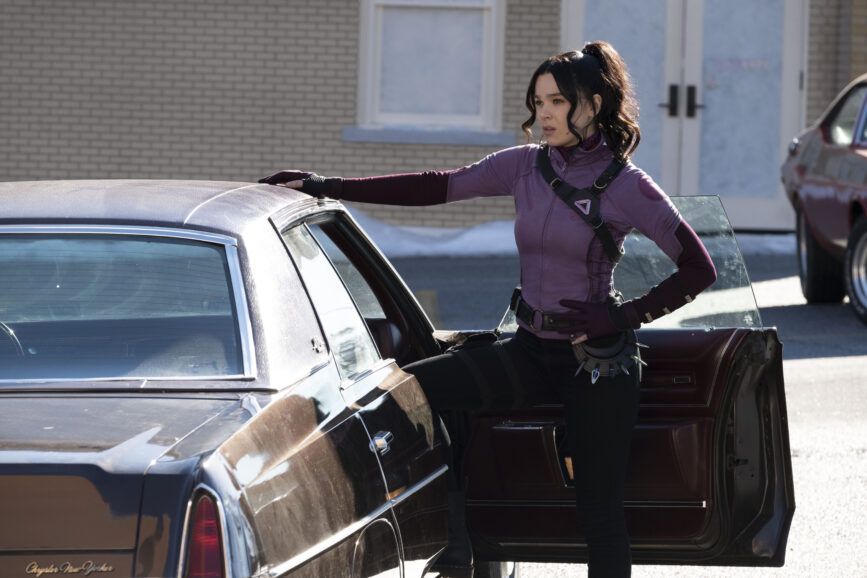
“The very first thing we started working on was the car chase,” says DP James Whitaker ASC of pre-production. Many rounds of previz and live tests were undertaken over several months to design the shot and its stunts. After trying several lens and camera combinations Whitaker chose to shoot the oner, like the rest of the series, on an Alexa Mini LF, pairing it with a 17mm PanaSpeed lens.
The transpo team and key grip Charles Arnold built a steel channel into the roof of the picture car, strong enough to hold a six-foot power slider with the camera hanging beneath on a remote head. “We all knew that we wanted the camera to feel handheld, but we also knew that it couldn’t be handheld,” Whitaker explains, as it was physically impossible for an operator to pan 360 degrees while sitting in the car. The DP selected a Mini Libra head because its control console has a remote handheld mode. “You can put a rig on someone’s shoulder standing 400 feet away and the Libra head takes on the quality of a handheld camera.”
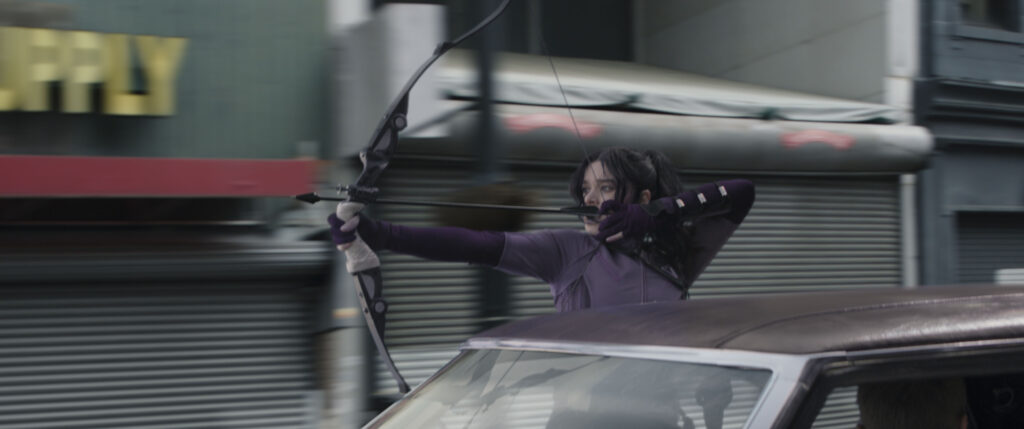
VFX painted out the truss tower supporting the driving pod as well as stitching two takes together as the camera comes to the end of its final rotation. This allowed Whitaker’s team to switch to a genuinely handheld camera which captured the last few lines of dialogue from the back seat before being handed out through the window to a second operator who framed Steinfeld aiming her bow.
One hitch was that the Mini Libra struggled with the g-force generated when the Biscuit Jr. executed a sharp 180-degree turn. The motors failed during a test run, but a quick-thinking technician saved the day. “He ended up taking a bunch of rubber bands to increase the stability of the head,” Whitaker chuckles, “a very low-tech way to give the head just enough strength to be able to handle the g’s.”
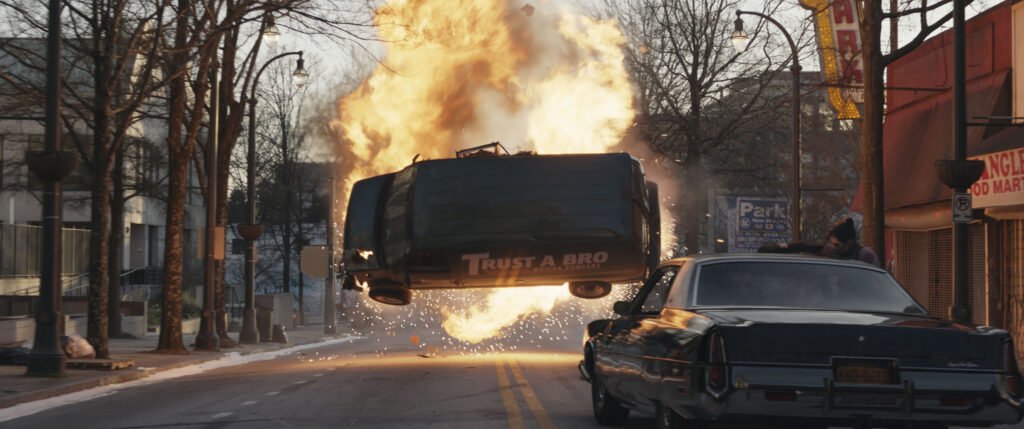
Fairground forces
G-forces were also a factor for Vanessa Whyte when she shot a scene for the 2021 revenge thriller Bull on a fairground waltzer. “On the waltzer we have two actors and a very brutal murder,” she reveals. “I’ve done handheld on a waltzer before, for a documentary, and I think it’s actually really dangerous. The g-force is crazy.”
Given the high speeds required of the ride in Bull, Whyte knew that it was crucial to rig the Sony Venice firmly and safely. Key grip Jamie Monks positioned the camera body low down and close to the waltzer’s centre of mass, while the sensor block was mounted on a bazooka to frame the raking two-shot Whyte desired. “It’s such a dizzying, scary, disorienting sequence,” she comments. “What makes it really interesting is the lighting that goes in and out of their faces while they’re spinning.”
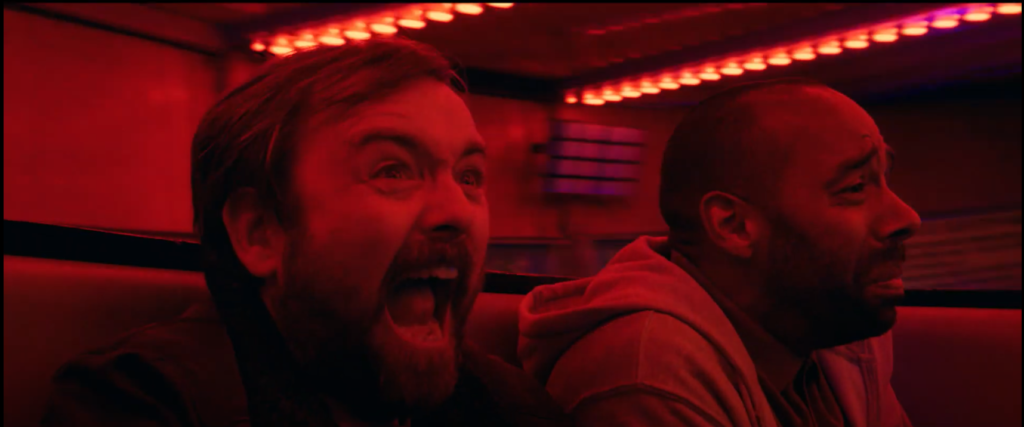
For a 2018 episode of Silent Witness, Whyte employed a motorbike from Bickers Action. “It was a really narrow alley, and the characters were chasing, so we wanted to have the speed of someone sprinting,” she recalls. Key grip Gary Norman rigged the Alexa Mini to the rear of the bike for a leading angle, and to the front for a low angle following the characters’ feet.
No stabilisation was used for the camera, but Whyte says the visceral results worked perfectly for the feel of that chase. “I wouldn’t recommend doing it for a really long scene because it’s so shaky. I think if you did it now, maybe you’d put a Ronin head on.”
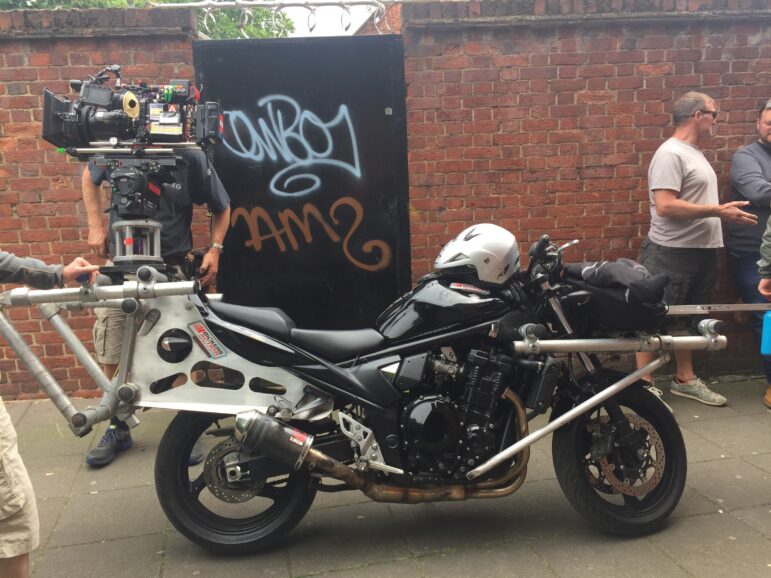
Past procedures
There were no Ronin heads around when John Stanier BSC shot an ambitious Shell commercial for Ridley Scott Associates in 1997. The ad sees a speeding Formula One Ferrari being refuelled by an aerial tanker. “The director wanted everything shot ‘live’,” Stanier remembers. “The camera car was the vehicle used on Tony Scott’s movie Days of Thunder, which could reach speeds of 175 mph… Two Arriflex cameras were remote operated from the front of the tracking car as the aircraft passed over us, only 12 feet high!”
Working with key grip Jim Dunford, Stanier also deployed a Frazier lens to capture the driver’s POV. The Frazier’s narrow barrel capped with a rotating prism meant that it could reach over the driver’s head, with the camera body mounted behind him.
When Ben Wheeler BSC shot last year’s The Tourist for the BBC and HBO, he also wanted to get in close to the action. The series opens with a gripping desert chase as Jamie Dornan’s central character, known only as the Man, is pursued by a mysterious lorry. Wheeler explains, “Our intention throughout the show was to take the audience with the Man on his journey, to place them right in the Australian outback with him and for it to be as experiential as possible.”
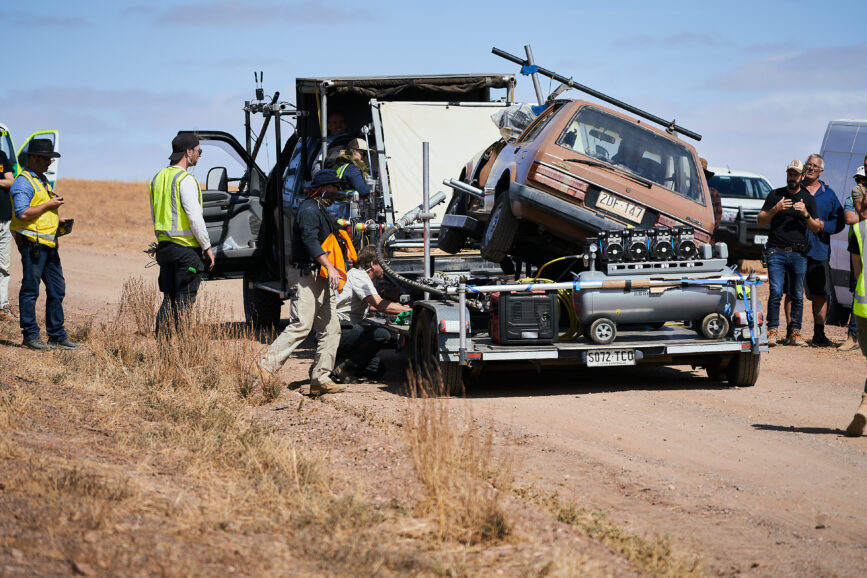
The production used several different versions of the Man’s car, including one which was dubbed the “Wonder Rig”. “Our key grip John Smith and his vehicle tech Pete ‘Itchy’ Itsines were incredible and came up with the idea of cutting off the front of one of our cars and attaching a series of rigging points to it that would allow us to get the camera anywhere across the bonnet or on the side, close to the action on the shorter lenses director Chris Sweeney and I favour.”
The chase ends when, thinking he is safe, the Man is suddenly sideswiped by the lorry and his car rolls onto its roof. “Our main inspirations were the crashes in No Country for Old Men and Whiplash, both of which hit the audience out of nowhere,” says Wheeler. Viewed from inside the car, the crash was achieved in two sections. “The idea was that the camera kind of moved with the impact, so it starts hard profile with Jamie in shot one but then appears to get knocked out to a rear three-quarter as the car is hit in shot two.”
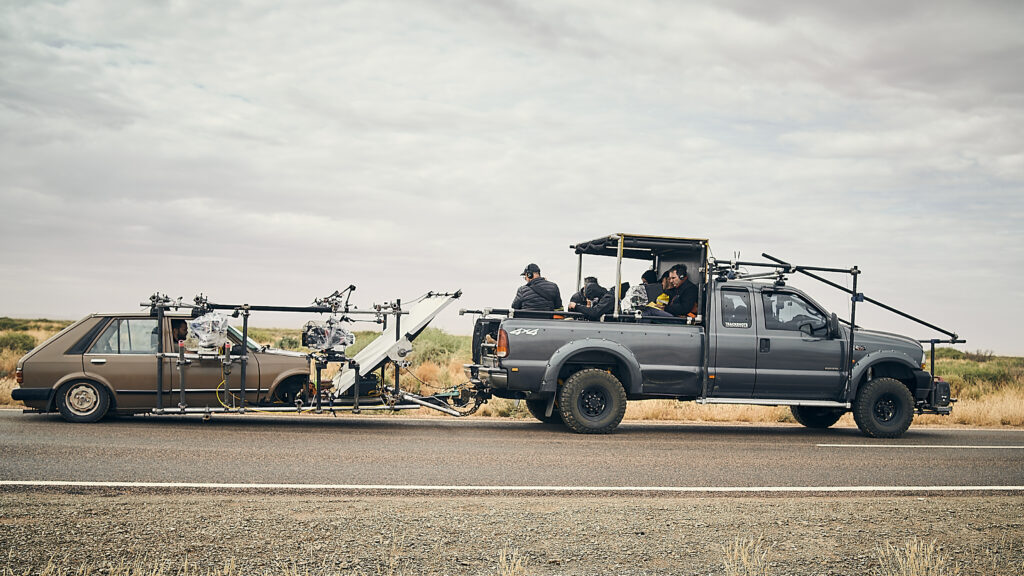
The first section was shot on a Sony Venice with a Hawk lens, rigged in the passenger seat opposite Dornan. Stunt co-ordinator Dean Gould mounted the car on a low-loader travelling at 50 mph, with an air-powered hinged lift rig that rolled the car on cue to a fixed angle.
“We then had a second car with a stunt double in with a Sony FX3 and Sirui Anamorphic rigged inside the car by John and his team,” Wheeler continues. This car was driven along on the forks of a Manitou telehandler, flipped off onto its roof, then dragged along upside-down on a cable by another vehicle. “The two shots were joined together with surprisingly little post blending, and we are really pleased with the results.”




